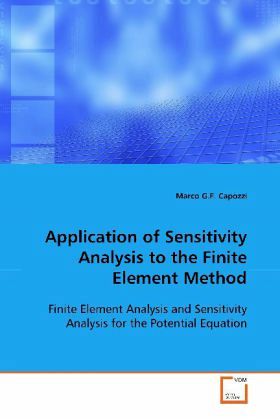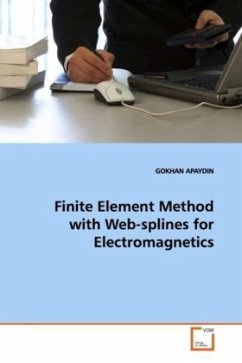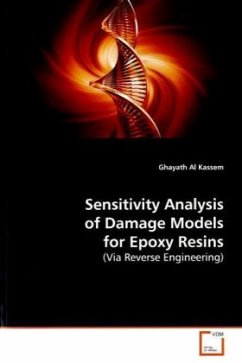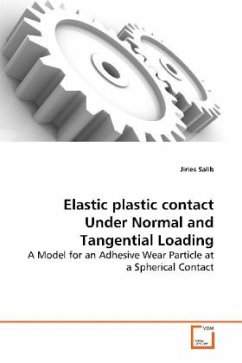
Application of Sensitivity Analysis to the Finite Element Method
Finite Element Analysis and Sensitivity Analysis for the Potential Equation
Versandkostenfrei!
Versandfertig in 6-10 Tagen
32,99 €
inkl. MwSt.

PAYBACK Punkte
16 °P sammeln!
Finite element analysis and sensitivity analysis has been performed on Poisson''s equation. An application is that of potential flow, in which case Poisson s equation reduces to Laplace s equation. The stiffness matrix and its sensitivity are evaluated by direct integration, as opposed to numerical integration. This allows less computational effort and minimizes the sources of computational errors. The capability of evaluating sensitivity derivatives has been added in order to perform design sensitivity analysis of non-lifting airfoils. The discrete-direct approach to sensitivity analysis is u...
Finite element analysis and sensitivity analysis has
been performed on Poisson''s equation. An application
is that of potential flow, in which case Poisson s
equation reduces to Laplace s equation. The
stiffness matrix and its sensitivity are
evaluated by direct integration, as opposed to
numerical integration. This allows less
computational effort and minimizes the sources of
computational errors. The capability of evaluating
sensitivity derivatives has been added in order to
perform design sensitivity analysis of non-lifting
airfoils. The discrete-direct approach to
sensitivity analysis is utilized in the current
work. The potential flow equations and the
sensitivity equations are computed by using a
preconditioned conjugate gradient method which
greatly reduces the time required to perform
analysis, and the subsequent design optimization.
Airfoil shape is updated at each design iteration by
using a Bezier-Berstein surface parameterization.
The unstrucured grid is adapted considering the mesh
as a system of inteconnected springs. Numerical
solutions are compared with analytical results
obtained for a Joukowsky airfoil.
been performed on Poisson''s equation. An application
is that of potential flow, in which case Poisson s
equation reduces to Laplace s equation. The
stiffness matrix and its sensitivity are
evaluated by direct integration, as opposed to
numerical integration. This allows less
computational effort and minimizes the sources of
computational errors. The capability of evaluating
sensitivity derivatives has been added in order to
perform design sensitivity analysis of non-lifting
airfoils. The discrete-direct approach to
sensitivity analysis is utilized in the current
work. The potential flow equations and the
sensitivity equations are computed by using a
preconditioned conjugate gradient method which
greatly reduces the time required to perform
analysis, and the subsequent design optimization.
Airfoil shape is updated at each design iteration by
using a Bezier-Berstein surface parameterization.
The unstrucured grid is adapted considering the mesh
as a system of inteconnected springs. Numerical
solutions are compared with analytical results
obtained for a Joukowsky airfoil.












